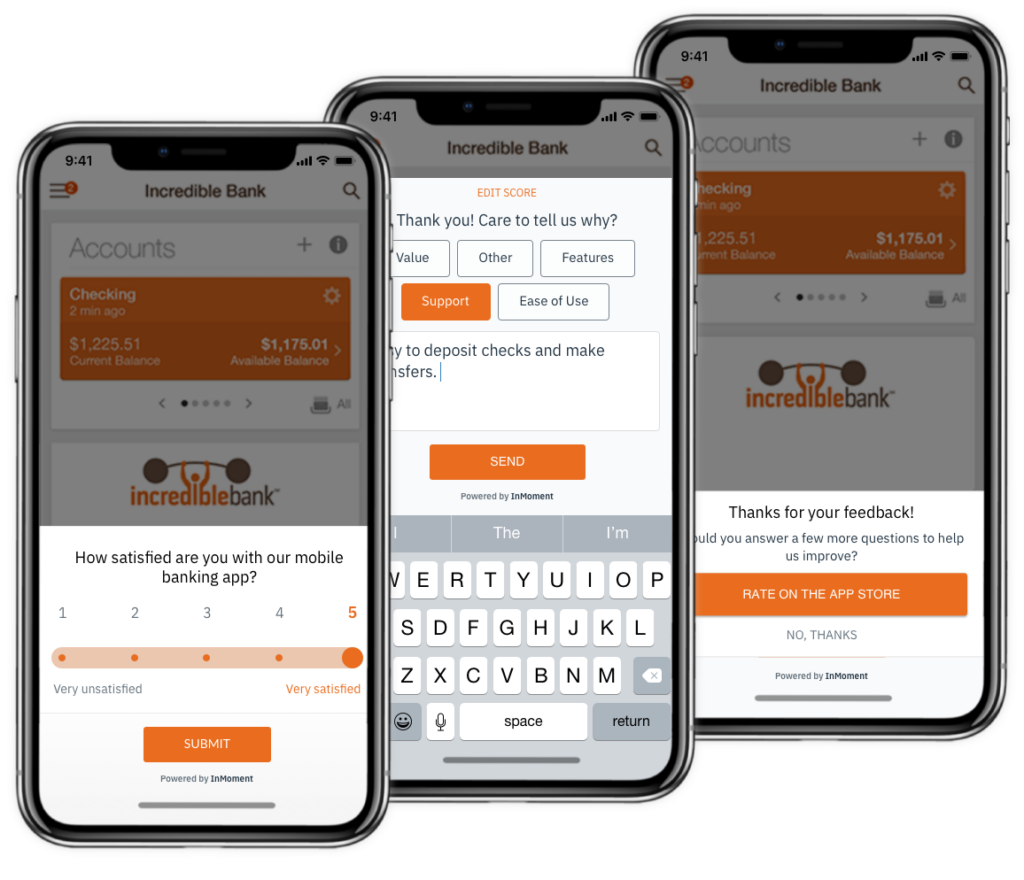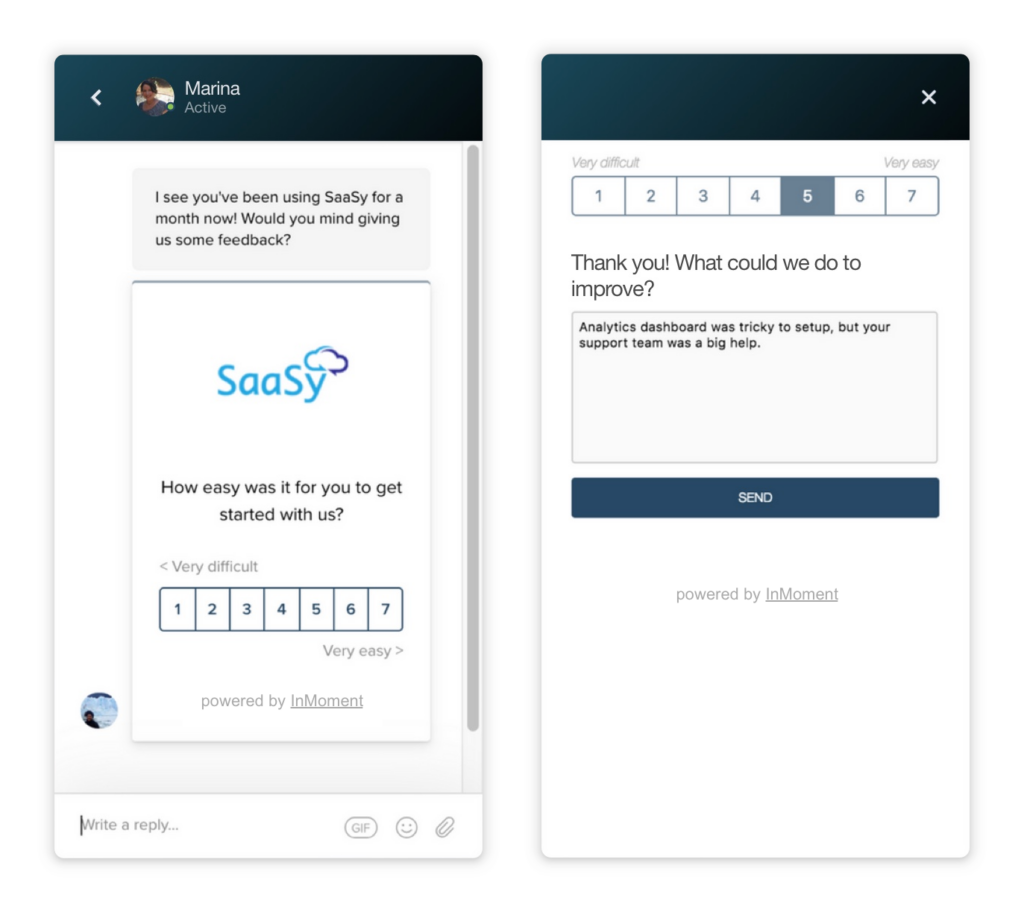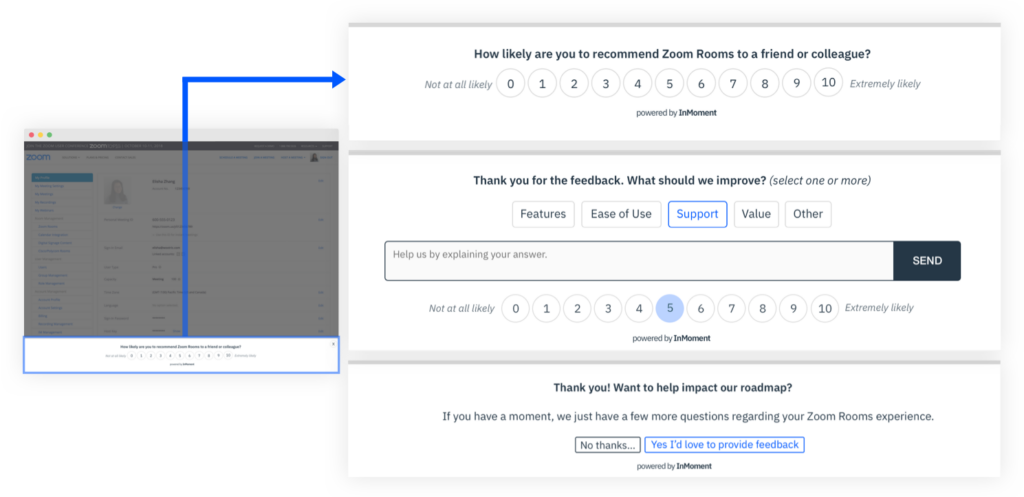
Customer experience surveys have served us well when it comes to collecting customer feedback data. When we have questions about our brand’s customer experience (CX), there’s no better way to get answers than by asking our customers directly, right? But how do you make sure you’re sending the best possible customer experience survey? Asking the right questions? Sending your survey at time?
Keep reading to find the answers to these questions and more in this overview of customer experience survey facts, best practices, and beyond.
What Is a Customer Experience Survey?
Customer experience surveys are customizable questionnaires sent to targeted customer segments to determine how a brand is performing, uncover areas where customers are satisfied, and detect areas in need of improvement across the customer journey. The end goal of these surveys is to improve customer experiences and impact business metrics.
Why Use Customer Experience Surveys?
Customer experience surveys are more vital than ever before due to an extremely competitive market in every industry as well as empowered consumers. In mere seconds, customers can compare your brand’s products and services with that of your competitors. Therefore, you cannot afford to overlook any areas of dissatisfaction that may prevent customers from purchasing from you.
When you deploy customer experience surveys and other methods of customer listening, however, you are placing your customer and their satisfaction at the heart of everything you do—and that pays. In fact, customer-centric companies are 60% more profitable than companies who don’t focus on customers. This is largely due to the fact that brands who are customer centric leverage the insights they gain from customer experience surveys to make improvements for their customers, which improve the following metrics:
- Customer Acquisition: Create exceptional experiences that attract new customers via word of mouth, and also leverage your voice of customer to create more targeted marketing campaigns.
- Customer Retention: Reduce customer churn by resolving points of friction throughout your customer journey and leverage predictive analytics to identify customers who are likely to leave so you can implement a rescue plan.
- Higher Customer Lifetime Value (CLV): Understand what keeps customers around so you can continue to not only satisfy their needs, but go above and beyond to delight them, keeping them around for a lifetime
- Lower Cost to Serve: Identify areas where you can eliminate duplicate efforts and inefficient processes so you can fine tune your approach to save time, effort, and money.
Different Types of Customer Experience Surveys
There are four popular types of customer experience surveys many businesses leverage across the customer journey to gauge their brand reputation, customer satisfaction, customer effort, and other more targeted metrics.
#1: Net Promoter Score (NPS)
What Is Net Promoter Score?
Net Promoter Score (NPS) is a method of measuring brand customer satisfaction that was released in 2003 by Fred Reichheld, a partner at Bain & Company. It is among the most popular customer experience metrics as 48% of companies with more than $500 million
in revenue are using NPS as their primary indicator for measuring the customer experience success.
How Is Net Promoter Score Measured?
The Net Promoter Score is based on one question: “What is the likelihood that you would recommend company x to a friend or colleague?” NPS then categorizes customers into three types. The customer type is based on their likelihood to recommend your brand on a scale of 0-10:
- Promoters (10-9)
- Passives (8-7)
- Detractors (6-0)
Your Net Promoter Score is calculated by subtracting the percentage total of detractors from the percentage total of promoters.
Why Does Net Promoter Score Matter?
NPS helps brands to get a brand-level tracking study of their overall customer experience because it gives them a single metric to measure their brand health. Additionally, NPS helps brands adopt an easy-to-understand, common language by giving them one singular metric to keep track of.
Net Promoter Score Survey Template
If you are looking to deploy a NPS customer experience survey, you can use the following template to craft a Microsurvey for in-app, in-site, or in-platform feedback, or even for an email survey or SMS survey.
#2: Customer Satisfaction Score
What Is a Customer Satisfaction Score?
Customer Satisfaction Score or CSAT measures a customer’s level of contentment after a specific interaction, transaction, or general satisfaction with a specific feature within a product or service.
CSAT customer experience surveys ask “how satisfied are you with your recent experience at BRAND X?”
How Is Customer Satisfaction Score Measured?
Customer Satisfaction Score is equal to the total number of satisfied responses (with respondents who rated a 4-5 on a scale of 1-5 considered to be “Satisfied Responses”) divided by the total number of responses, then multiplied by 100. The final results should be rounded to the nearest whole number.
Why Does Customer Satisfaction Score Matter?
Customer Satisfaction Score is relatively easy to understand as it correlates to a single question on a survey. Also, it makes benchmarking against other brands simple and straightforward.
Additionally, CSAT customer experience surveys allow brands to get a snapshot of the customer experience at a specific touchpoint, which allows them to more easily identify areas that need improvement.
Customer Satisfaction Score Template
Looking to use CSAT post transaction or at another touchpoint? Check out this customer satisfaction score template:

#3: Customer Effort Score
What Is Customer Effort Score?
Customer Effort Score or CES is a customer experience survey metric that allows brands to measure the ease of customer interaction and resolution during a request.
The Customer Effort metric became popular in the 1990s as companies realized that understanding the amount of effort it takes a customer to do business with them is critical. The thinking was that effort should be low for easy interactions whereas customers should expect to put in more effort for complicated or involved experiences. Effort plus satisfaction would help the organizations understand whether they were delivering on expectations.
How Is Customer Effort Score Calculated?
CES appears on a customer experience survey by asking customers to rate whether they agree or disagree with this statement: “The company made it easy for me to handle my issue.”Customers answer according to a scale from 1-7 with 1 being “Strongly Disagree” and 7 being “Strongly Agree.”
Organizations then take the number of those who responded with 5 and above then divide by the total respondents to calculate the CES.
Why Does Customer Effort Score Matter?
CES is especially popular in contact centers, but it is becoming more popular with other industries. It also allows companies to focus on one goal: doing whatever it takes to make things easy for their customers. Therefore, they can unify their efforts and work toward
that desired outcome.
Customer Effort Score Template
If you’re looking for a Customer Effort Score template, you’ve come to the right place! Take a look below:

#4: Custom Customer Experience Surveys
When to Use a Custom Customer Experience Survey?
A customer CX survey allows you to ask more specific questions to targeted customer segments about a product, interaction, or service. These questions allow you to get into the details of your customer experiences to add more context to specific initiatives, such as product development, employee training initiatives, and beyond.
These customer customer experience surveys should be extremely targeted and designed to trigger at a very specific time, for instance, right after a customer performs the specific action your team is trying to fine tune.
There are plenty of benefits to using custom customer experience surveys, but the primary benefit has to be the fact that these surveys allow you to fill in any knowledge gaps or blind spots in your brand’s customer journey (more on this later).
How to Take Action on a Customer Experience Survey
Leveraging the metrics we’ve discussed so far is a great way to get a specific score associated with either your overall customer experience or customer satisfaction or ease at a specific touchpoint, but what about taking action on that metric to improve experiences? That’s why you need to get the story behind the score with a follow up question.
A follow up question comes after a metric-based question and simply asks, “What is the reason behind your score?” (or a variation of that question) and then leaves a text box open for customers to type in their explanation.

This is where the most impactful insights will come from. Leveraging text analytics, you’ll be able to analyze the unstructured data from the text box to get to the why behind the score. It’s the difference between knowing an experience needs to be improved and knowing how an experience can be improved.
The best customer experience solutions will also provide dashboards within their platforms that identify the key drivers of specific experiences, which let you and your team know what elements of the customer experience you need to get right. Additionally, some CX platforms even can suggest action plans based on the unstructured data you collect via your customer experience surveys.
Customer Experience Survey Best Practices
When to Send a Customer Experience Survey?
When you should send a customer experience survey depends on why you are sending a survey. More relationship driven surveys with overarching questions like Net Promoter Score can have more flexible sending times, as you are gauging the overall satisfaction with a brand.
For more transaction- or interaction-based questions such as CSAT or CES, however, timing is everything. You want to make sure these surveys are sent right after the interaction in question. If there is a delay, you risk inaccurate data or lower response rates as the interaction or transaction is no longer top of mind for the customer.
You also want to make sure you aren’t sending surveys too frequently or you risk survey fatigue. If you’re reaching out to your customers every time you have a question, there’s a serious possibility that they’ll get tired of your questions and stop participating. This leads to lower response rates, which can affect the quality of the results you receive. Even worse, it can even cause over-surveyed customers to have a negative perception of your brand.
Where to Send a Customer Experience Survey?
There are various distribution channels you can leverage for your customer experience survey:
- Social Media Surveys
- SMS Surveys
- Email Surveys
- Mobile App Surveys
- Website Surveys (or Intercept Surveys)
- In-Platform Surveys
- Phone Surveys
- QR Code Surveys
- Mail Surveys
- Chatbot Surveys
- In-Person Surveys
- In-Store Surveys (via tablet, point of service, or push-button terminal)
- Surveys via Push Notification
There are plenty of options, but the most important factor to consider is where your customers prefer to leave feedback. When you meet customers where they are and on the channels they frequent most often, you have a higher likelihood of sufficient response rates and more valuable and actionable feedback data.
Three Steps to Take Before Sending a Customer Experience Survey
Today, there are also so many other ways to collect customer feedback other than customer experience surveys. For instance, research shows that today’s customers are less likely to leave feedback via a traditional long form survey. However methods like Microsurveys, as well as social media and review sites and chatbots have grown in popularity.
Now, that doesn’t mean we need to abandon surveys all together! In fact, it’s just the opposite. It just means we need to send them at the right time and for the right reasons.
Below, we’ll talk through three expert-advised steps you should take before you send that customer experience survey.
Step #1: Ask, “What Am I Trying to Achieve With This Customer Experience Survey?”
This first step may seem a little rudimental, but we find that it is often the most vital, yet overlooked element of a successful customer experience survey strategy. We often tell our clients to “design with the end in mind,” meaning to think about not just what you want to accomplish tomorrow or even a few months from now, but when you think about your ideal future state of your customer experience, what does it look like? Only then will you be able to accurately identify how to get from point A to point B.
Failure to pinpoint your goals when it comes to survey strategy often looks like sending too many surveys with too many questions, leading to too much data—and therefore, too little intelligence.
That’s why we suggest getting your team together (and maybe including some expert consultants like our Strategic Insights Team) to decide what problem you’re trying to solve or what you’re trying to improve.
For example, are you striving to increase market share? Retain existing customers? Knowing the answers and setting goals right off the bat will help you narrow down the areas to listen (because if you listen everywhere, you end up with a lot of data and no answers).
Step #2: Take a Look at Your Current Customer Feedback Data
Wondering what questions will surely cause survey fatigue? The ones that you should have the answers to already. That’s why it’s so important to take a look at your existing customer data. This can be inferred data (such as customer relationship management data) or internal data (from emails, slack, and the like).
Today, there is no shortage of data. So, why would you want to add even more to your pile when your existing data might already hold the answers you seek?
Using the same example from step one, if you are looking to increase customer retention, you may be able to use inferred/internal data to identify that 30% of your churn is driven by a lack of personalized experiences. That gives you an area in which to take action, all without sending a single survey!
Step #3: Consider Existing External Data
So you’ve decided what you’re trying to achieve and sorted through your existing inferred and internal data. Now what? Next comes the data that already exists, but maybe you don’t have access to it yet.
We are of course referring to indirect data, such as comments and ratings from Glassdoor or other review sites as well as social media comments, credit card and IP targeting data, and the like. The right Experience Improvement partner should be able to help you access this data and the insights it holds.
By leveraging indirect data, you are gaining additional insights from existing customers and employees, but also non-buyers and non-employees. For instance, if you examine Glassdoor data from competitors, you can identify why their job postings are attracting candidates. You can then leverage that data to improve your own postings.
Now You Can Send That Survey!
Still have questions? Great! These are the perfect candidates for sending a quick survey. By following the three preceding steps, you can rest assured that you have exhausted all of your considerable data resources, and can send out a strategic, minimal survey without risking survey fatigue.
Want to learn if your customer experience surveys are the best they could possibly be? Our experts have developed an assessment that allows you to optimize your surveys and make sure that they will provide actionable insights that drive business results! Check out the Survey Assessment


